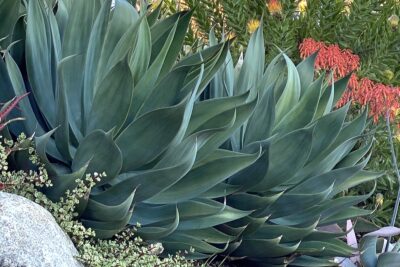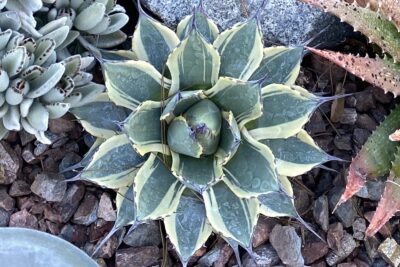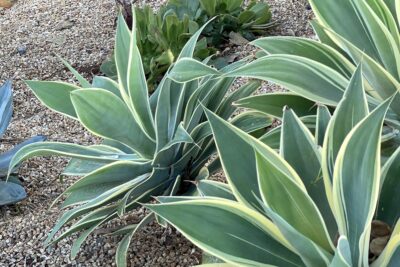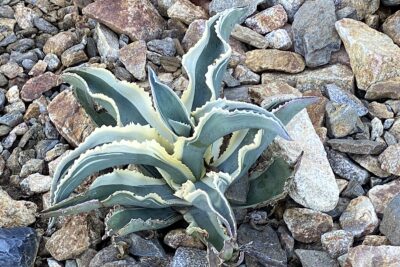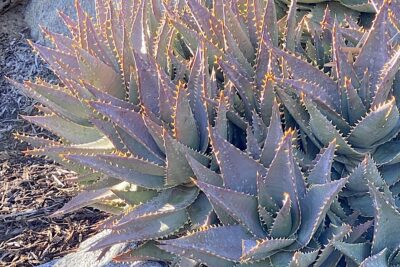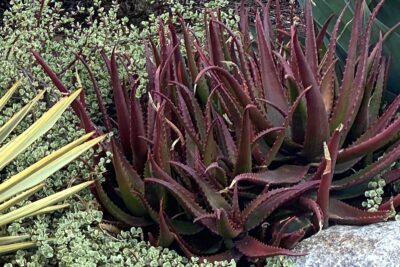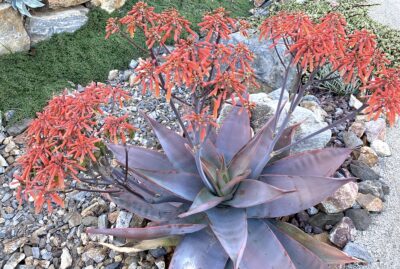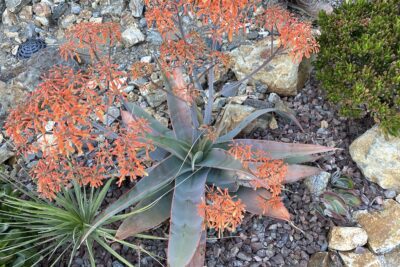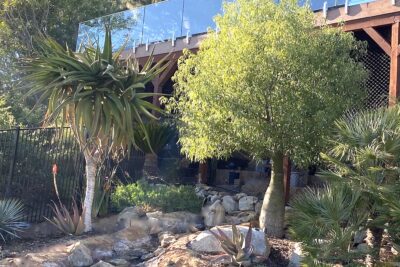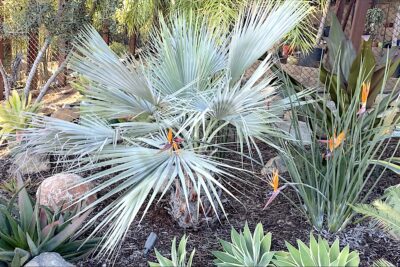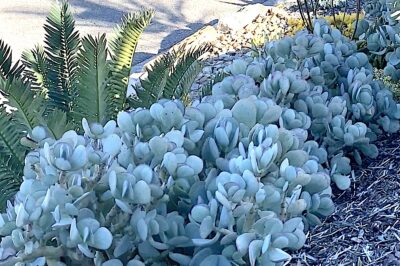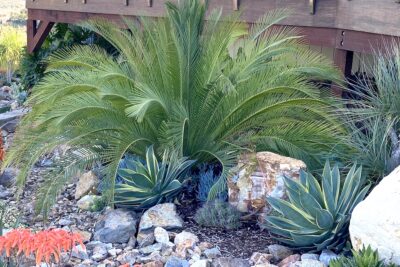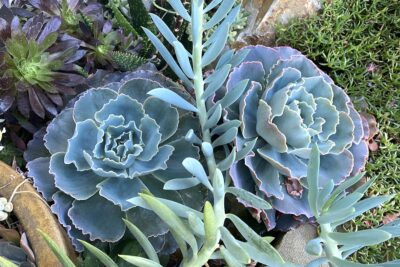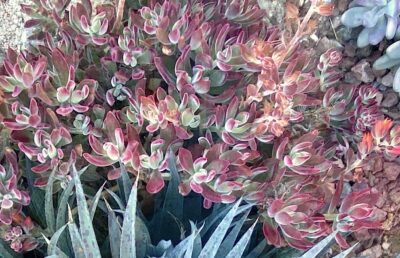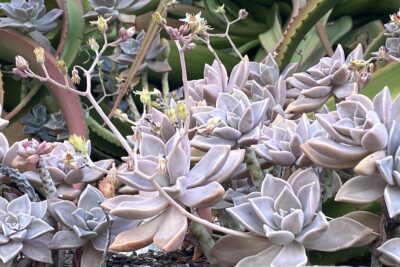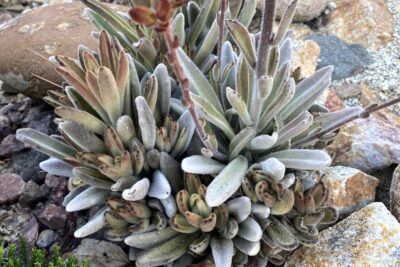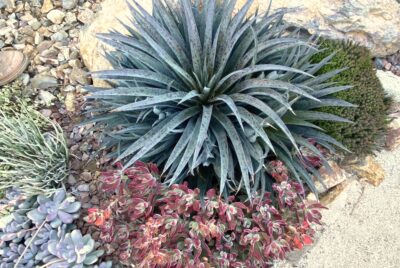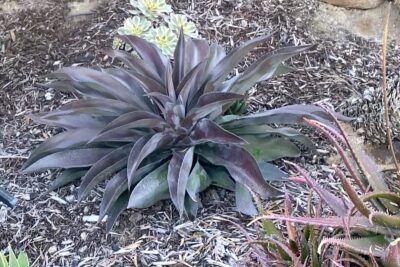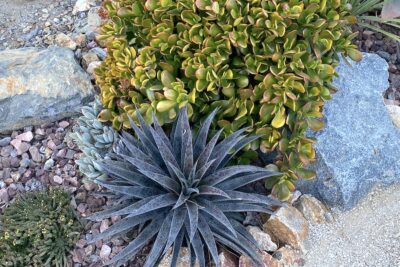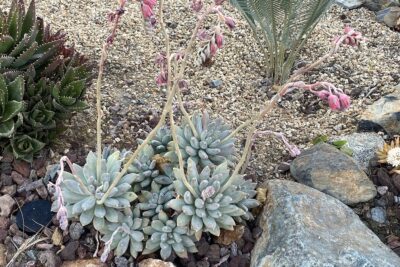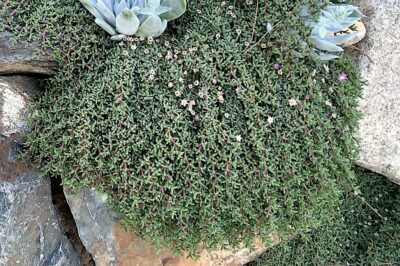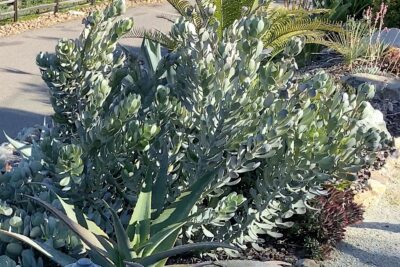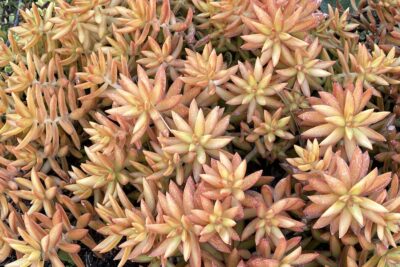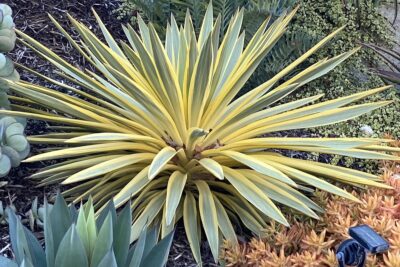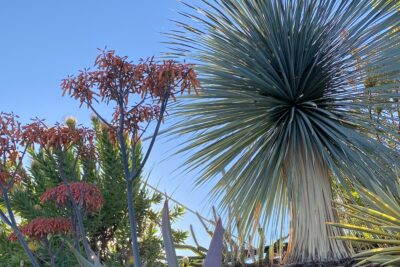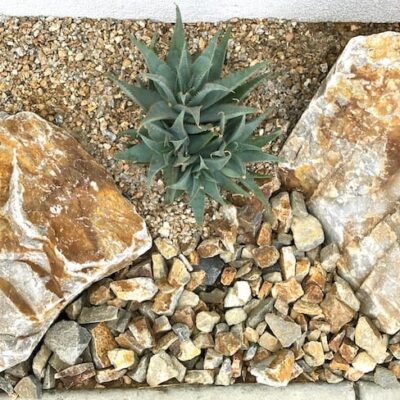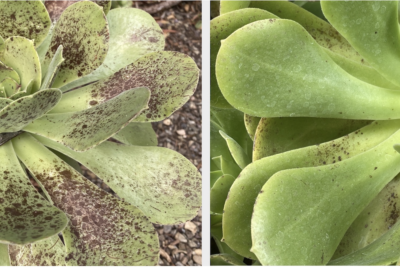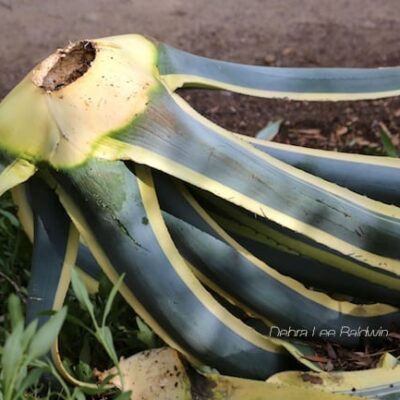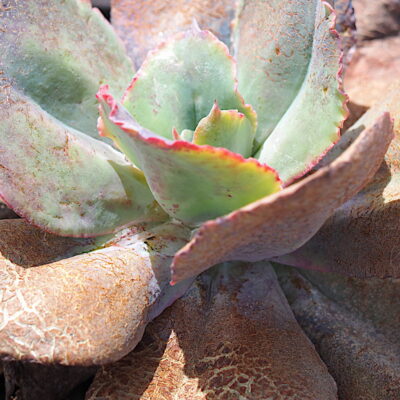Scroll down for Plant Gallery
Landscape designer Steve McDearmon of Garden Rhythms "had to work with nature" when tackling this steep, streetside slope in the hills north of San Diego. The property's susceptibility to erosion from winter rains, plus its length and grade, made installation, care, and access challenging.
Homeowners Donna and Paul Carlomagno had Steve come off and on during seven years as their budget allowed. When he started, "There was no plan," Steve recalls. "It was just bare dirt with a pile of boulders at the bottom."
In addition to succulents, Steve worked with many plants Donna had already acquired, including cycads. "It makes my heart happy," she says of a garden that meets her criteria of "exotic and drought-tolerant." Paul adds, "When I walk down here, I can't believe I actually live here."
Garden Overview
- Location: Hillside with an 180-degree view to the east and south
- Size of streetside garden: 200+ feet long x 20 feet high x 10 to 15 feet wide.
- Size of upper garden with path, along house and deck: 150 feet.
- Special features: Cactus-and-agave garden, tree aloes, cycads, terraces and stream bed---all visible from the large deck above.
- Grade: One foot descent per foot of length
- Age of plantings: 5 to 7 years
Challenges and Solutions
Overall: To make a long, steep, streetside garden appealing yet practical.

Above: "Before" planting, five years ago.

After: Streetside succulent slope as it looks now
Challenge: Make the garden exotic yet drought-tolerant
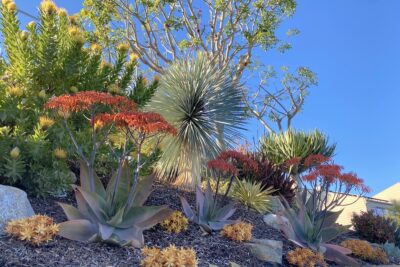
Solution: Combine cycads, palms, proteas, cacti and succulents
Challenge: Slope erodes during winter rains
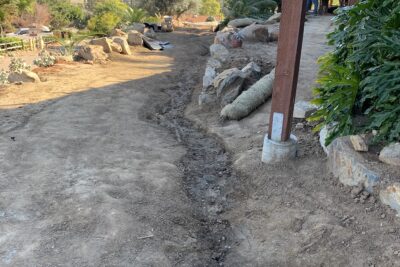
(Before) Erosion during winter rains

Stream bed under construction. Steve lined it with Geotex tile fabric and pond liner to prevent soil from eroding. Note drain at lower right.
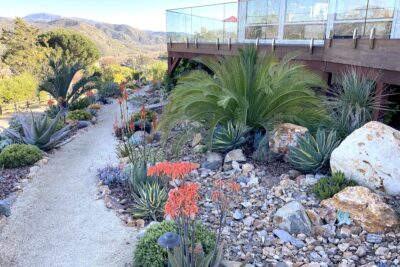
(After) Solution: Rock-lined stream bed follows the natural flow of rain during storms
Challenge: Keep wood deck posts dry
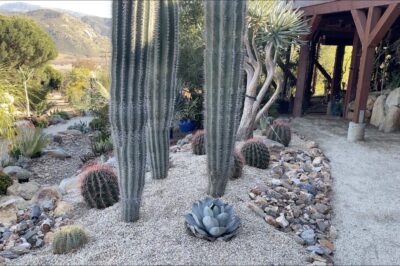
Solution: Install no-water plants (cacti and agaves) in adjacent terrace
Challenge: Make a stacked-stone wall interesting
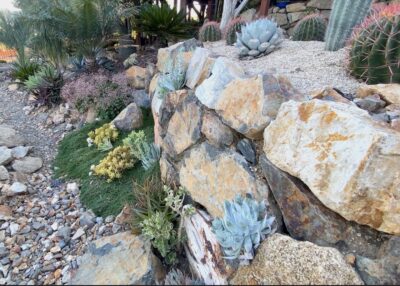
Solution: Tuck dudleyas and carpet of stars in gaps between rocks
Challenge: Tough, low-water, easy-care trees
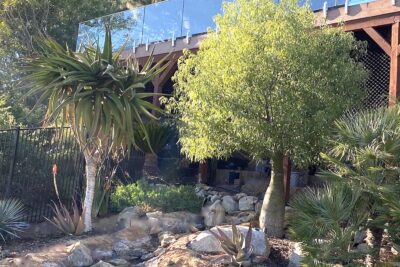
Solution: Aloidendrons, palms, Beaucarnea recurvata, Dracaena draco
Challenge: Natural path edging to confine DG
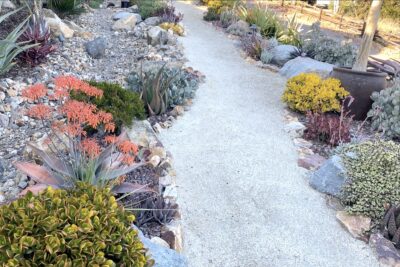
Solution: Boulders and rubble rock line pathway
Challenge: Protect bare soil with a low-cost topdressing
Challenges: Access steep succulent garden for maintenance; cover bare soil with something less expensive than crushed rock
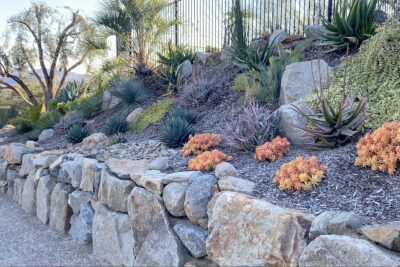
Solution: Use boulders on slope as random staircase, topdress with bark mulch.
Why does a succulent garden need topdressing?
Let me count the ways! It...
- lends a finished look
- diffuses the impact of rain on soil
- slows erosion
- cuts down on weed germination
- make weeds easier to pull
- holds moisture in soil
- protects roots from extremes of heat, cold and sun.
Plant Gallery, slope garden
Related info on this site
Why You Really Need Rocks
Smart designers cover bare soil with rocks in succulent gardens that are as sophisticated and good-looking as they are practical.
Jim Bishop’s Steep, One-Acre Garden
Jim Bishop’s steep, one-acre terraced garden in San Diego is unlike any other, except perhaps Jardin Exotique d’Èze near Monaco, overlooking the Mediterranean. “But there, they have to dig basins into
See a Succulent Collectors’ Garden Renovation
The layout is still good, but a lot of plant material needed to be removed to reveal or to salvage large, mature specimens worth showcasing.
The post Succulent Slope Before & After appeared first on Debra Lee Baldwin. Copyright © Debra Lee Baldwin.
from Debra Lee Baldwin https://ift.tt/WM23vI7
via IFTTT

